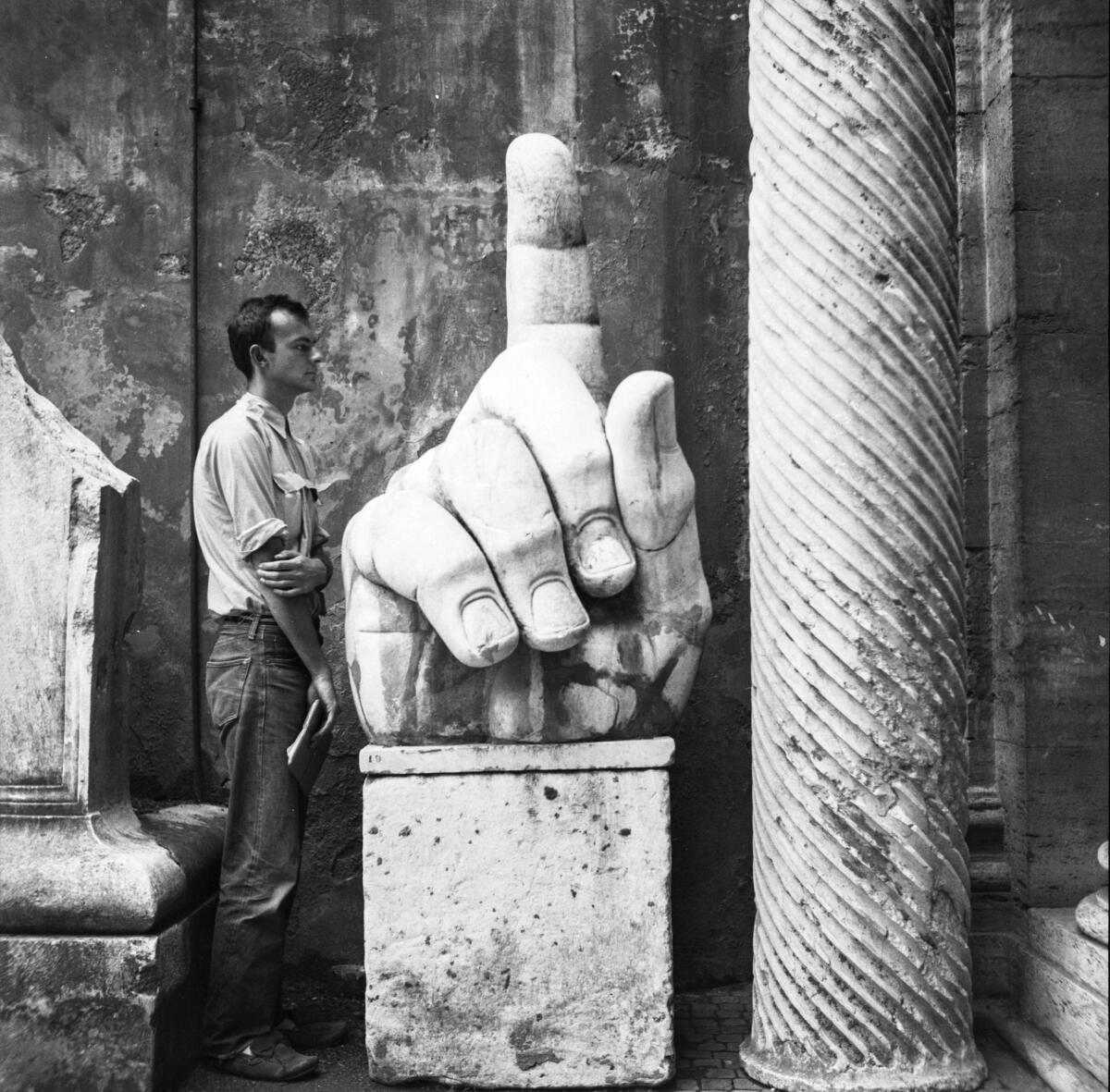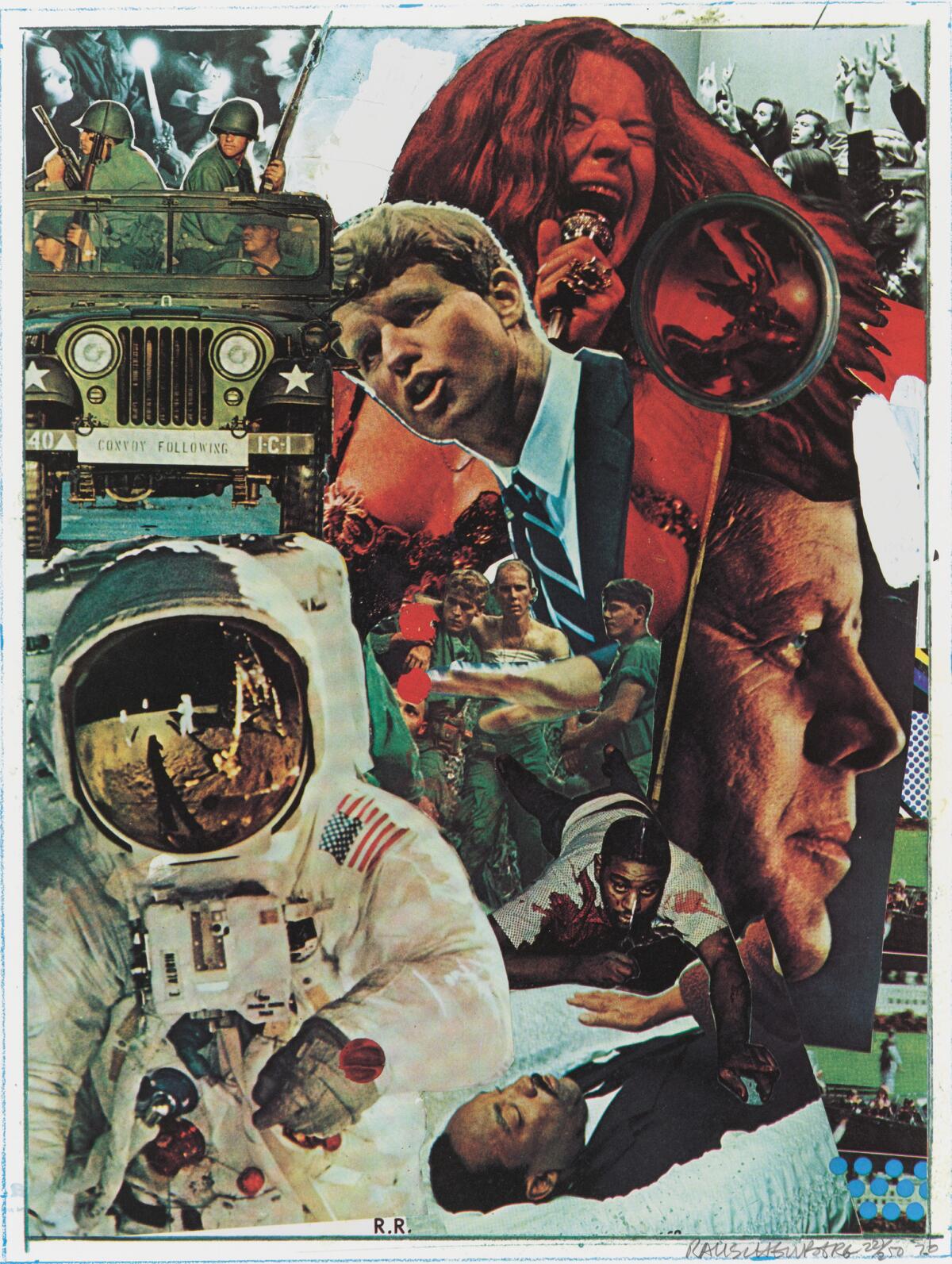New book on Robert Rauschenberg examines the artist’s colorful legacy
Robert Rauschenberg liked to smash molds. In the 1950s, at the apex of the Abstract Expressionist movement, the artist employed his off-the-wall imagination in service of a multimedia approach to art that served as a harbinger of what was to come in late 20th and early 21st century art.
This is the crux of a new book about Rauschenberg published this month by the Museum of Modern Art in New York. Featuring 16 essays examining the artist’s six-decade career, including one by Helen Molesworth, chief curator of the Museum of Contemporary Art in Los Angeles, the colorful book arrives in conjunction with the first Rauschenberg retrospective to be staged in the 2000s.
That show opened at Tate Modern in London and will travel to MoMA and San Francisco Museum of Modern Art in the coming year.
“You can see his work as a pre-history of contemporary practice,” says MoMA curator of painting and sculpture Leah Dickerman, who authored and compiled the book with Tate Modern director of exhibitions Achim Borchardt-Hume.
“So many of the things that you see in his work — a performative bent, interdisciplinary practice, an egalitarian approach to a pair of socks or a brushstroke — are all ways of working that Rauschenberg made possible,” Dickerman says, adding that the book also stresses how people in the artist’s life influenced his work across disciplines.
Josef and Anni Albers, Merce Cunningham and John Cage, and David Tudor all make appearances in this deeply curated and richly illustrated book.





ALSO:
The biggest entertainment stories
Get our big stories about Hollywood, film, television, music, arts, culture and more right in your inbox as soon as they publish.
You may occasionally receive promotional content from the Los Angeles Times.




